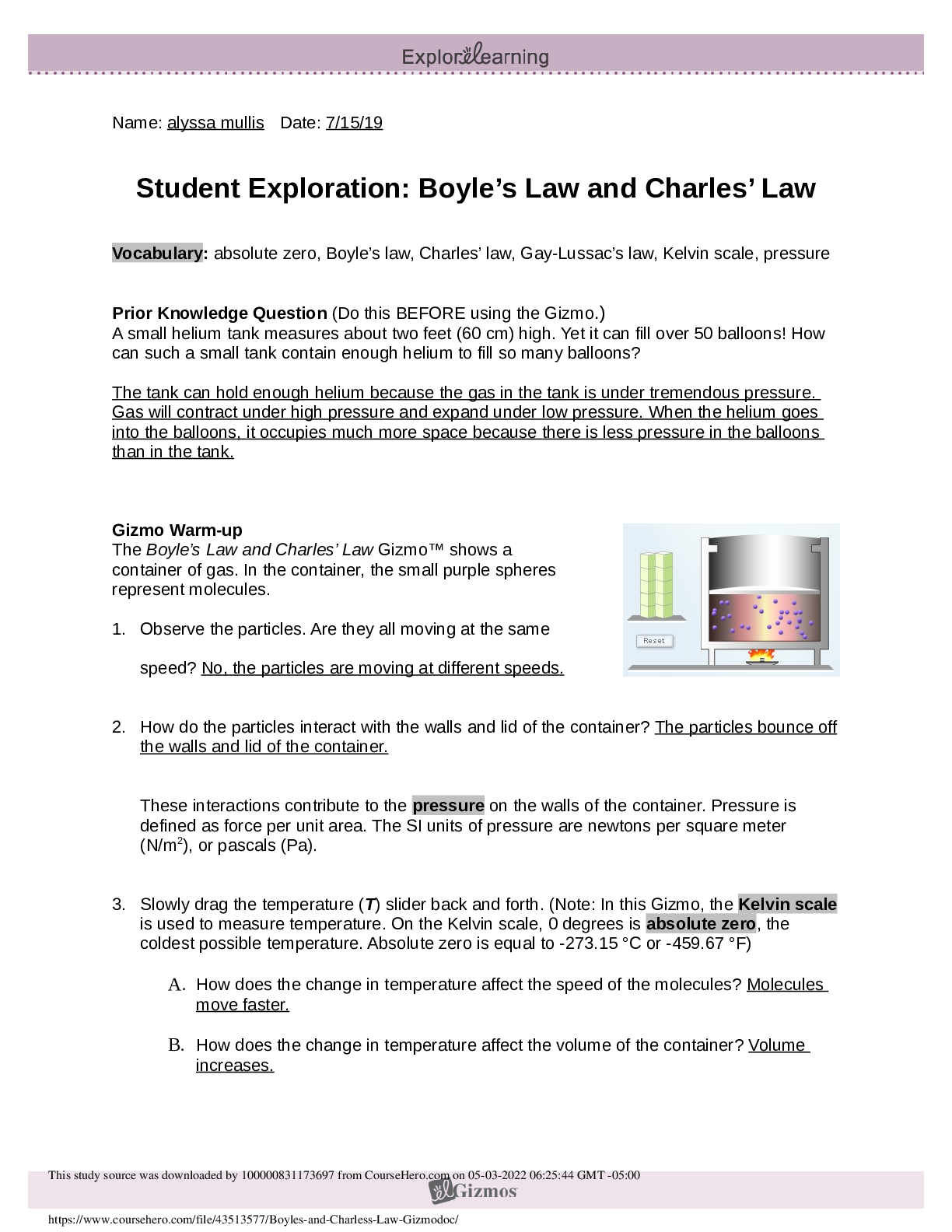Student Exploration- Boyle’s Law and Charles’s Law GIZMO
Course
English
Subject
Chemistry
Category
Exam
Pages
8
Uploaded By
ATIPROS
Preview 2 out of 8 Pages


Download all 8 pages for $ 9.00
Reviews (0)
$9.00
